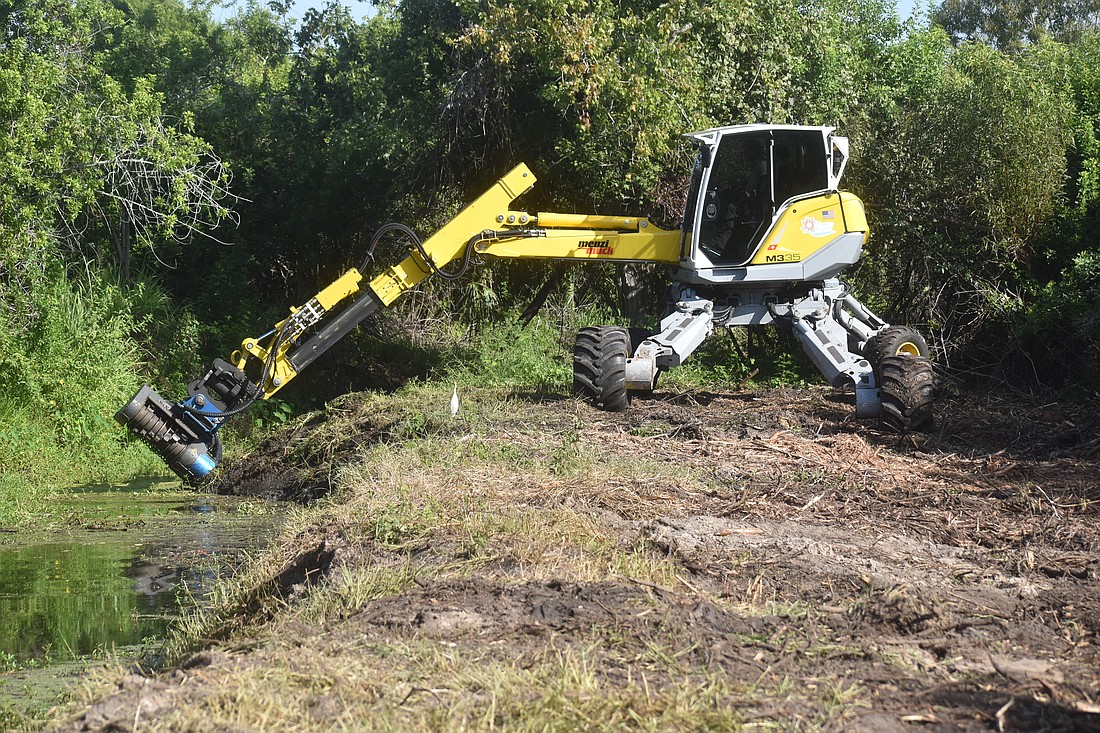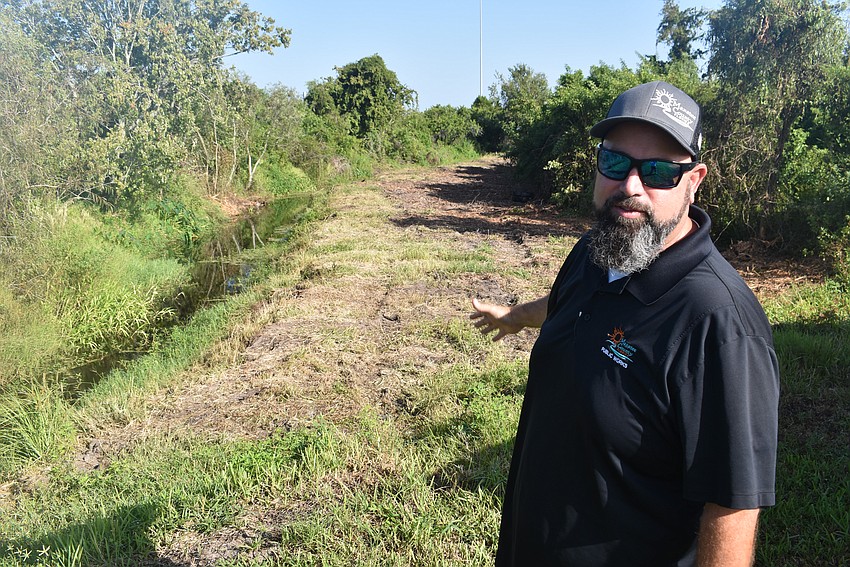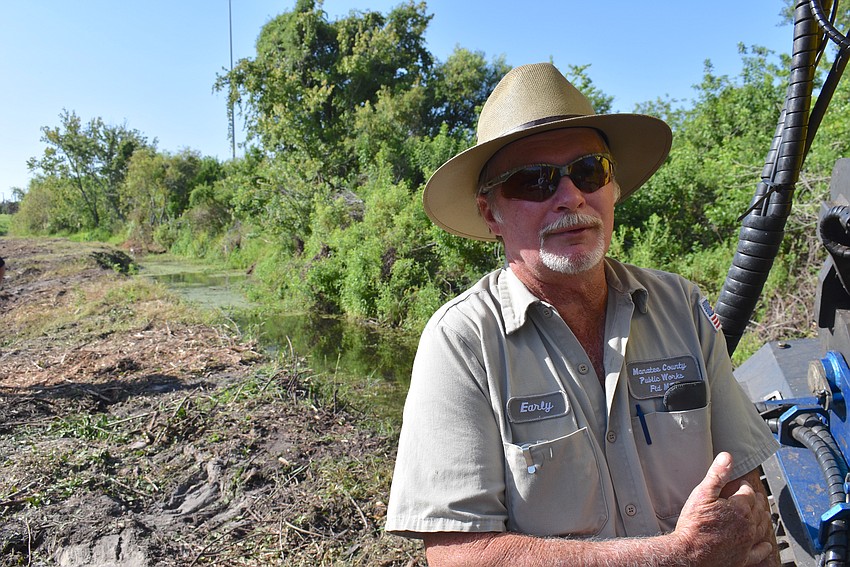- May 1, 2024
-
-
Loading

Loading

Clint Rimer, the field operation chief of Manatee County's Stormwater Section, was asked if the prevailing drought had given his workers extra "dry" time to do maintenance on the county's canal and ditch systems.
"It has allowed us some breathing room," Rimer said. "We know they are coming."
In this case, "they" meant storms.
Rimer was speaking on Aug. 23, well before Idalia was churning through the southern Gulf of Mexico toward the Florida coast, building into a tropical storm by Aug. 28 and approaching hurricane strength.
Rimer was right. They are coming.
Idalia obviously was going to give Rimer and Public Works Director Chad Butzow a chance to check out their crews' maintenance work.
In the end, though, Rimer and Butzow said their crews can only maximize the efficiency of their stormwater system.
"Our motivation and our goal is to keep our system working with maximum ability," Rimer said. "But there is a maximum."
Both Rimer and Butzow said they hope the public understands that Mother Nature can be more powerful than any work they do. The stormwater drainage systems incorporate canals that in many cases were formed 75 or more years ago. The entirety of the system is meant to handle a timed release of stormwater.
For instance, water in a neighborhood collects in a retention pond that releases the water into the system in prescribed amounts. Hurricanes and tropical storms aren't regulated by the county. Sometimes it is simply too much water in too short a period.
Nonetheless, the Stormwater Section employees work to keep the flow going smoothly.
On Aug. 23, a project was in full gear in the Cypress Strand canal system directly behind the Costco. It involved brush cutting and mowing, reshaping the banks of the canal, and clearing out a wide path for access to the canal for maintenance.
The Cypress Strand canal system is an example of a canal that was formed more than 75 years ago, perhaps naturally or as a farm ditch. Over the years, the community grew around it.
Often, that means fewer access points to the canal. It also can mean increased volume with the addition of homes and businesses.
Butzow noted that regulation of development is critical to allow the stormwater system to have a chance to handle the water.
"Everything we do is based on stormwater on the streets," Rimer said. "We don't alter the design of the canals. We restore them to function as close to 100% as possible."

On this day, the Stormwater Section's Dustin Certain was operating a Menzi Muck walking excavator to clear a path alongside the canal because previous access points were negated by development.
The Menzi Muck looks like some kind of lunar landing shuttle, with four legs that work independently of each other, and a cab for a single operator.
"I love this job because these (machines) are unique," Certain said. "You learn how to use all four of your extremities (to control the machine's legs)."
Certain climbed back into the cab and began obliterating any brush in his way.
"It uses a pavement grinding tool, in a drum with a rotating head," said Butzow, who wouldn't have minded giving the machine a whirl himself.
Certain also would use that tool to cut away parts of the canal bank to reshape it. He will be doing the same work for a week or two, clearing a path about a mile long, all the way to Kay Road.
While he was working, the Stormwater Section's Early Peters arrived on the scene. A 27-year stormwater worker, and a 31-year veteran of the Public Works department, Peters also operates the Menzi Muck.
"I was born and raised here (in East County) and I love being able to run equipment like this," Peters said. "There are a lot of challenges, and there's never a dull moment. You have to control the legs so you don't flip the machine over. You could go into one of these canals.
"I was taught by another operator to always keep yourself level. You always watch, like you are in a fishbowl. You need to see everything around you."
Rimer said it all was a good example of the behind-the-scenes work the public won't notice.

"A lot of what we do is off-road," Rimer said. "We don't have much interaction with the public. But the roadside ditches are different."
The roadside drainage systems usually are made up of either a ditch or piping system. The ditches need to be cleaned out and kept free of sediment, which settles to the bottom and is scooped out.
The pipe systems often are cleaned out with a hydraulic flush nozzle (high pressure hose).
Work along the roads often means a county crew might be blocking traffic to get the work done. Rimer and Butzow know that can be annoying to motorists, but they ask for patience from the public because the end result is that the stormwater system functions properly.
"Our guys will get off the road if they can," Rimer said. "But most of the time, they can't."
Both Rimer and Butzow said they can use all the help they can get from the public. Although most of the new development in East County involves excellent engineering to direct stormwater, some of the older sections of the county weren't so fortunate.
"Pre-1990, some of the areas might not even have a (retention) pond," Rimer said. "The main point is that, from our view, the draining system hasn't changed for ages. All development (stormwater) connects to a system and the water ends up in Tampa Bay, the Manatee River or Sarasota Bay. It's got to go to one of those places."
They said they could use the public's help. If someone sees a problem with the stormwater system, they want them to report it. If a Stormwater Section employee asks for access to a canal by going through a person's back or side yard, giving them that access is essential.
"You will benefit from it," Butzow said.
And a final way to help the Stormwater Section employees would be to come work with them. Butzow said Public Works has about 20 openings with workers with no experience starting at $18 an hour.
"It is a family atmosphere," Rimer said.